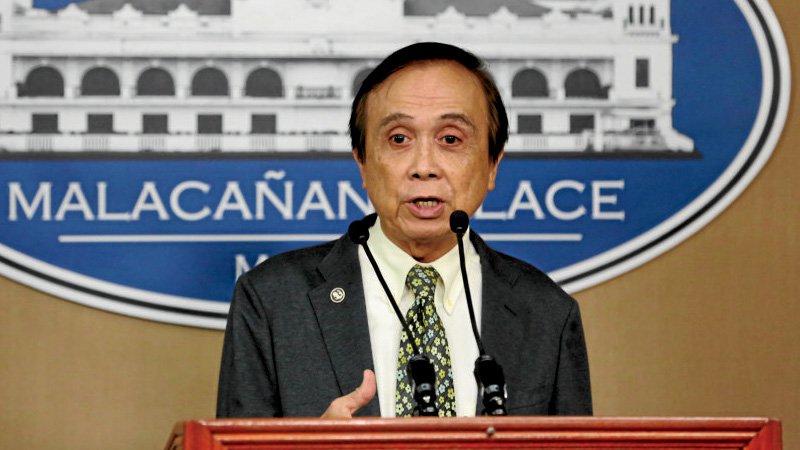
NEDA Director Ernesto Pernia in a press briefing held in Malacañang Palace. INQUIRER PHOTO/JOAN BONDOC
The country’s chief economist Tuesday said that the economy likely grew faster in the third quarter as the agricultural sector reversed previous quarters of decline during the July-to-September period.
Socioeconomic Planning Secretary Ernesto M. Pernia told reporters that economic growth could have hit more than 7 percent during the third quarter as the Philippine Statistics Authority reported also Tuesday that agricultural output grew 2.98 percent in the same period, reversing the 0.06-percent drop a year ago.
But since the agriculture sector posted year-on-year declines in production during the first two quarters, the end-September output remained 1.53-percent lower compared to last year.
Pernia noted that the weather during the third quarter was better for agriculture while economic output was also boosted by government spending as well as the manufacturing sector.
The government will announce the third-quarter GDP figure on Thursday.
But for economists polled by the Inquirer, third-quarter economic growth likely slightly eased from the second quarter’s better-than-expected 7-percent expansion as the election-related spending boost wore off.
Standard Chartered Bank economist for Asia Chidu Narayanan projected gross domestic product (GDP) growth of nearly 6.8 percent during the July-to-September period.
“We expect growth to have declined mildly in the third quarter on the fading of the boost from election spending and the high-base effect from the third quarter of 2015,” Narayanan said. The Philippine economy grew 6.2 percent during the third quarter of 2015.
Bank of the Philippines economists Emilio Neri Jr. and Nicholas Antonio Mapa expected GDP growth of 6.7 percent in the third quarter.
Noting that the new administration “likely hit the ground running,” Neri said they raised their third-quarter forecast from the earlier projection of about 6 percent.
“By delivering immediately on its revised deficit-spending targets, the national government may have kept overall economic activity close to its first-half pace of 6.9 percent,” said Neri, referring to the plan to widen the fiscal deficit to 3 percent starting next year by ramping up infrastructure spending.
“Government spending has moved in to complement the traditional growth drivers, with no let up from the expenditure binge seen in the tail end of the Aquino administration,” Mapa noted.
ANZ Bank’s forecast was 6.9-percent third-quarter growth. “The robust expansion in industrial production despite the weak export outlook signals sustained strength in domestic demand,” it said.
The latest government data showed that merchandise exports bounced back in September to end 17 straight months of year-on-year decline alongside strong growth in imports and manufacturing. Exports in the first nine months, however, were down 6.2 percent year-on-year.
IHS Markit Asia-Pacific chief economist Rajiv Biswas estimated the third-quarter figure at 6.6 percent, “with the continued contraction in exports in the third quarter acting as a drag on the overall strong growth momentum of the domestic economy.”
But as a whole, Biswas said “the Philippines is estimated to be one of the fastest-growing emerging markets worldwide in 2016, with third-quarter GDP expected to be underpinned by strong domestic demand.”
Ateneo de Manila University economics professor Alvin P. Ang’s projection was 6.7 percent mainly due to increased public expenditures.
For DBS Bank’s Gundy Cahyadi, the economy grew 6.8 percent in the third quarter as “domestic demand stays strong,” citing double-digit jumps in capital as well as consumer goods imports, reflecting robust private consumption.
The research arm of Moody’s Corp. saw third-quarter growth at 6.9 percent.
As for Japanese financial giant Nomura, the Philippines’ GDP likely expanded 6.5 percent during the July to September period. “Activity data for the third quarter were strong. Industrial output growth accelerated in July to August from the second quarter, and government spending held up, even after the elections,” Nomura said.
Capital Economics said it expected a “strong” 6.8-percent growth during the period.
Trinh Nguyen, economist at French financial firm Natixis, projected 6.6 percent third-quarter expansion mainly due to “higher fiscal spending and investment.”